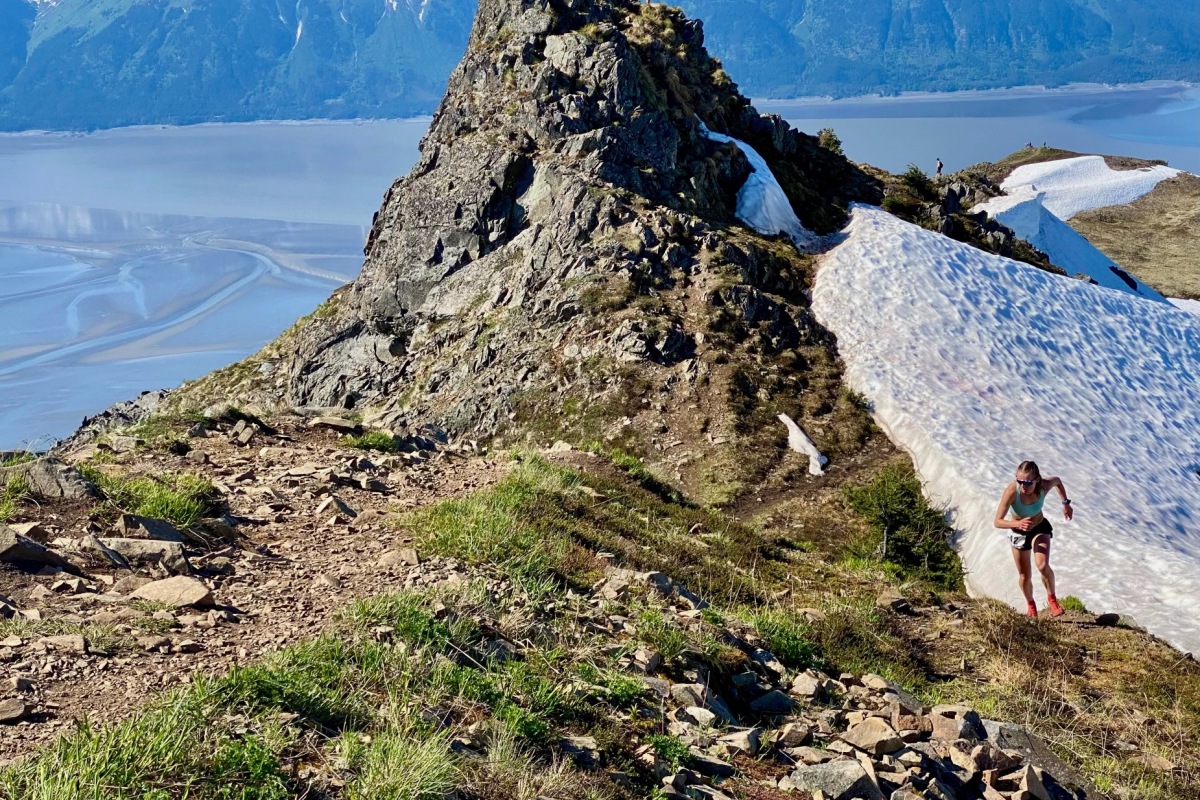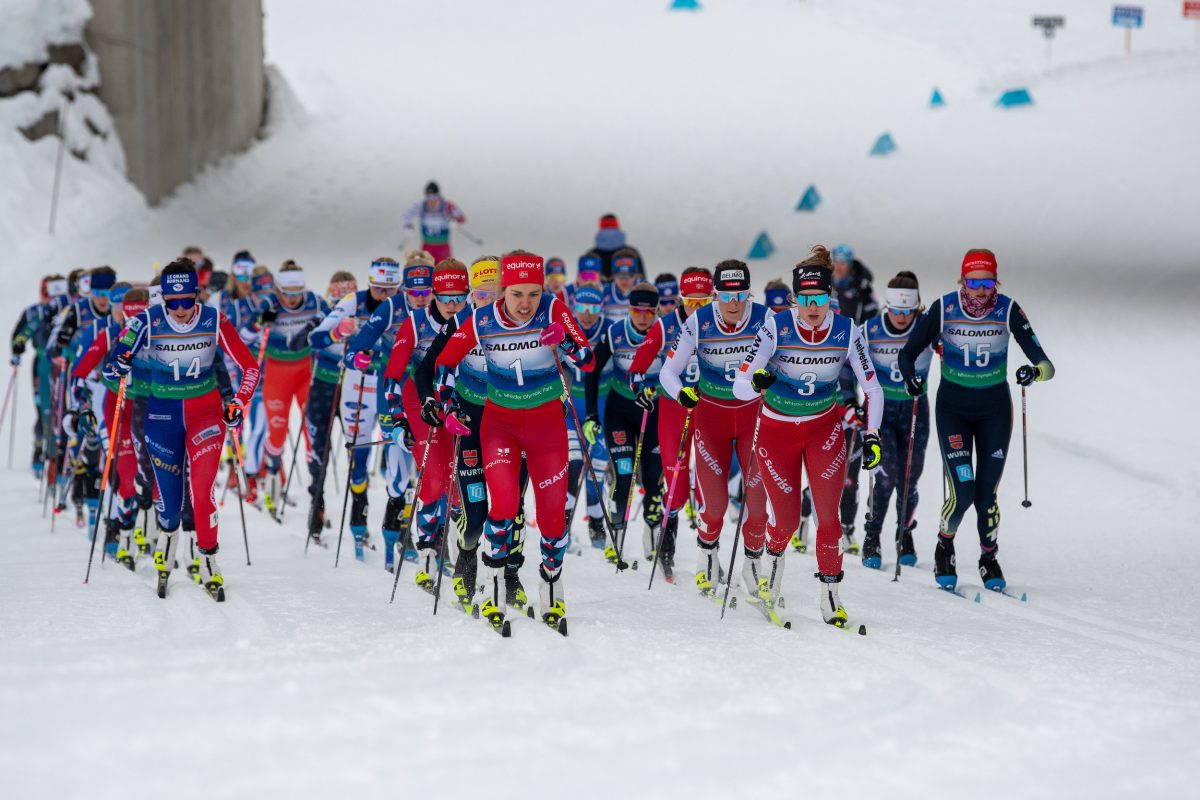
Just over two weeks ago, the U.S. Nordic Combined Ski Team set foot in France and immediately hopped on their road bikes. From there, they embarked on a weeklong cycling camp and watched two stages of the Tour de France along the way.
In all, they rode more than 600 kilometers and tallied some 14,500 meters of climbing, including a team time trial up L’Alpe d’ Huez. The team’s youngest A-team member, 22-year-old Taylor Fletcher clocked the fastest time up the nearly 15-kilometer ascent, which gains about 3,600-feet of elevation on an overload of switchbacks.
FasterSkier spoke with Fletcher on the phone Tuesday after he arrived in Park City, Utah, earlier that morning. Fletcher and his U.S. Ski Team (USST) teammates recently returned to the U.S. after ending their trip in Sochi, Russia, where they competed in the first competitions of the FIS Summer Grand Prix.
Before that, the U.S. squad visited Oberstdorf, Germany, where the A-team spent a day and a half reminding their legs how to jump after so many hours on the bikes.
(Note: Check back for another FasterSkier story on the U.S. team’s experience in Sochi, including what its members thought of the venue and they’re feeling at this point in the summer. Below is a video about the team and the Tour made by Fletcher’s older brother, Bryan.)
***
FasterSkier: How many times have you personally seen the Tour de France in person?
Taylor Fletcher: That’s my second time going over there and checking it out. We saw two stages this trip and two last trip. They’re really fun to go to, but watching them on TV is almost better because you can see the whole race, not just the 10 seconds they come by. The first year what was really cool is we were able to go watch the stage and ride down, go to the car, drive back to the hotel and watch the finish. That’s definitely the way to do it.
FS: Did you something similar this year?
TF: We did it one of the days. Actually what we did, which was really cool, we biked to watch the stage, watched them come by and they still had about 18 kilometers to go and so then we biked down, went to a bar with a bunch of people, ordered pizza and watched the last climb. So that worked out pretty good.
FS: What’s it like being at the Tour?
TF: It’s nuts. I would compare it to any of the biggest events in the U.S. or even the Olympics. There’s people lining every climb, pretty much the whole way up, and some are hammered from 2 o’clock, from pretty much 11 o’clock until they are sober enough to un-park their campers and drive down. Then you have people who are riding from their houses and climbing up, so you have pretty much anybody that you can imagine up there, and it’s just a great atmosphere. Everyone loves it and they’re all cheering for everybody. It’s just a great time.
FS: Did watching them make you ride faster?
TF: Definitely. The whole purpose is to go over there and bike and enjoy ourselves and have fun with what we’re doing. We’re going to watch people that are the best in the world at doing it, so we try to be like them, which is fun. It’s not very successful for us because we’re still, like, beginners compared to them. It’s crazy. There’s hundreds of people in the roads so it’s almost more like the interstates become bike paths and you can bike anywhere.
FS: How did the team time trial go up L’Alpe d’ Huez?
TF: Going back like a month ago … we did a race up Sundance Resort [in Utah] and they have a really nice road there. I think it’s like eight miles of really nice road and it winds through the trees. [U.S. Ski Team sport science trainer Alex Moore] based everybody off a relative threshold, so everybody spun around on a stationary bike and figured out what their threshold was, and he set everybody up. [One] freeskier, she started 32 minutes ahead of Tad Elliott and Noah [Hoffman] and I. Based on your threshold you were either closer or some guys were like five minutes ahead of us, some were like 15. The idea of that was to get everybody to come to the finish line at once, so it was almost like a mass sprint. It wasn’t as close, [though].
Billy [Demong] wanted to try to do the same thing with the Alpe d’ Huez time trial, but he didn’t have the same data that the sport science guys have. He started a minute and a half ahead of me, and he beat me to the top by 30 seconds, but I raced it a minute faster than him. It was kind of like he won, but I had the fastest time. I was 47:30 and he was 48:30.
I don’t remember who started first, but they started, like, 25 minutes ahead of me. I was the last person to go. It’s funny, every time you start the race, you’re like, ‘There’s no way I’m going to catch this person, 25 minutes is way too much on a 50-minute climb,’ and then sure enough at the top, you’re going past them, like ‘Holy crap, I can’t believe I just made up 25 minutes on that first hill.’ It’s pretty interesting and it’s kind of fun because you never know who’s going to win.
FS: How hard is it?
TF: It was hard. The first 2 [kilometers] average like 11 percent, but the first 2 k’s are steep and it starts to level out. I think the average gradient for the whole thing is 8.1 percent.
FS: How are you feeling about your fitness considering how you did there and also in Sochi on Sunday, with a career-best Grand Prix result of 10th?
TF: I feel like I’m at a good level. I’ve been biking really strong all spring up until now, and I haven’t really spent much time on rollerskis. I definitely don’t feel like I’ve overtrained, I don’t feel like I’ve undertrained, I just feel like I’m right at that perfect level and the more time I’m going to spend on rollerskis, the better I’ll get. Leading up to nationals next week, I think I’m at a really good level and I’m excited about it.
FS: What exactly did you do in Oberstdorf (the site of the next set of Grand Prix races in late August)?
TF: We basically went there to have a couple jump sessions and we had one interval session at the rollerski course there, which is a really nice course, just to get our normal cross-country legs underneath us … after biking for a week.
We’ve jumped there pretty much every year. We had a World Cup there last year, and usually every summer we go there for a couple sessions because it’s a really nice facility.
FS: How was Sochi?

TF: It’s unbelievable, just the area is absolutely beautiful. Everyone said it kind of reminded them of East Coast, Vermont. The mountains are 3,000 meters high. It’s nuts; there are big mountains and it’s a true ski town. If they were to cut more trails, they could have resorts up and down the valley.
It’s kind of crazy that whole entire area is under construction and just big buildings are going up everywhere. They’re building a giant rail system from the airport all the way up to the Olympic venues, all the skiing venues and stuff. That’s going to be amazing when it’s all finished. Right now it reminds me of, like, SimCity, just thousands of guys running around. They don’t even wear hard hats or shirts, all they have is their tools and they’re just working day and night.
We’re going back there this winter for World Cup, so it’ll be pretty interesting to see how much more they’ve gotten done by the time we’re there. I would think they should have everything done by the Olympics, and once it’s done it’s going to be a really impressive town.
FS: Why were you disqualified for your suit on Saturday?
TF: I have an undersuit, like a one-piece undersuit that is head to toe, and I like it because it’s tight and it [fits] underneath the jumpsuit so it doesn’t catch. I had cut some holes in there, which were legal last year, but they changed the rules and you’re not allowed to have them anywhere. So I had to go get tested and [the official] felt that I had some holes, and now they’re being really strict with rules to enforce them for the winter so they had to disqualify me, so that was a bummer.
I found it out after I jumped on Saturday. If I found it out before, I could have just cut it off and skied, but I didn’t know that. It’s just my suit that goes underneath my jumpsuit … it’s just really more comfort than performance.
FS: How did you feel about Sunday’s performance (when you were 16th on the large hill, eighth in the race and 10th overall)?
TF: I was extremely happy because definitely some of the best jumpers were there that usually jump top five, and I was jumping pretty well in comparison to them. I had a pretty good race; I had one little spill. I slipped on some water and fell down.
There was a section you could hand water to the racers. [The first day when I was disqualified,] I gave Bill a feed of sports drink and everyone else just wanted me to pour it on them. I was just giving them bottles of water and dumping it on them. Bill got disqualified the second day [because of his suit] so he did the same thing. He threw it and it hit my back wheel and I just instantly slipped out. It was like I was running on ice and fell down, and I got back up and I kind of spazzed to get back where I was and I definitely think that cost me a lot of energy so I’ve got to work on that for sure. … Other than that I think it was a good showing. Everyone was happy.
FS: What was it like seeing teammate Todd Lodwick at the top of the podium on Sunday after he took second on Saturday?
TF: It’s good to see Todd doing well after taking a year off last year, and it’s good to see everyone else doing well. Everyone wants to take the first spot. Only one person can do that. It is what it is, you can’t change it, you can only wish to do better.
To have three or four in the top 10 is even better [Lodwick was first, Johnny Spillane placed seventh and Fletcher finished 10th on Sunday]. It shows the depth of the team and what we’re doing for summer training seems to be worthwhile and it just increases the motivation of the rest of the team to get to that level and continue to improve so they can have their chance up there as well.
Alex Kochon
Alex Kochon (alexkochon@gmail.com) is a former FasterSkier editor and roving reporter who never really lost touch with the nordic scene. A freelance writer, editor, and outdoor-loving mom of two, she lives in northeastern New York and enjoys adventuring in the Adirondacks. She shares her passion for sports and recreation as the co-founder of "Ride On! Mountain Bike Trail Guide" and a sales and content contributor at Curated.com. When she's not skiing or chasing her kids around, Alex assists authors as a production and marketing coordinator for iPub Global Connection.



